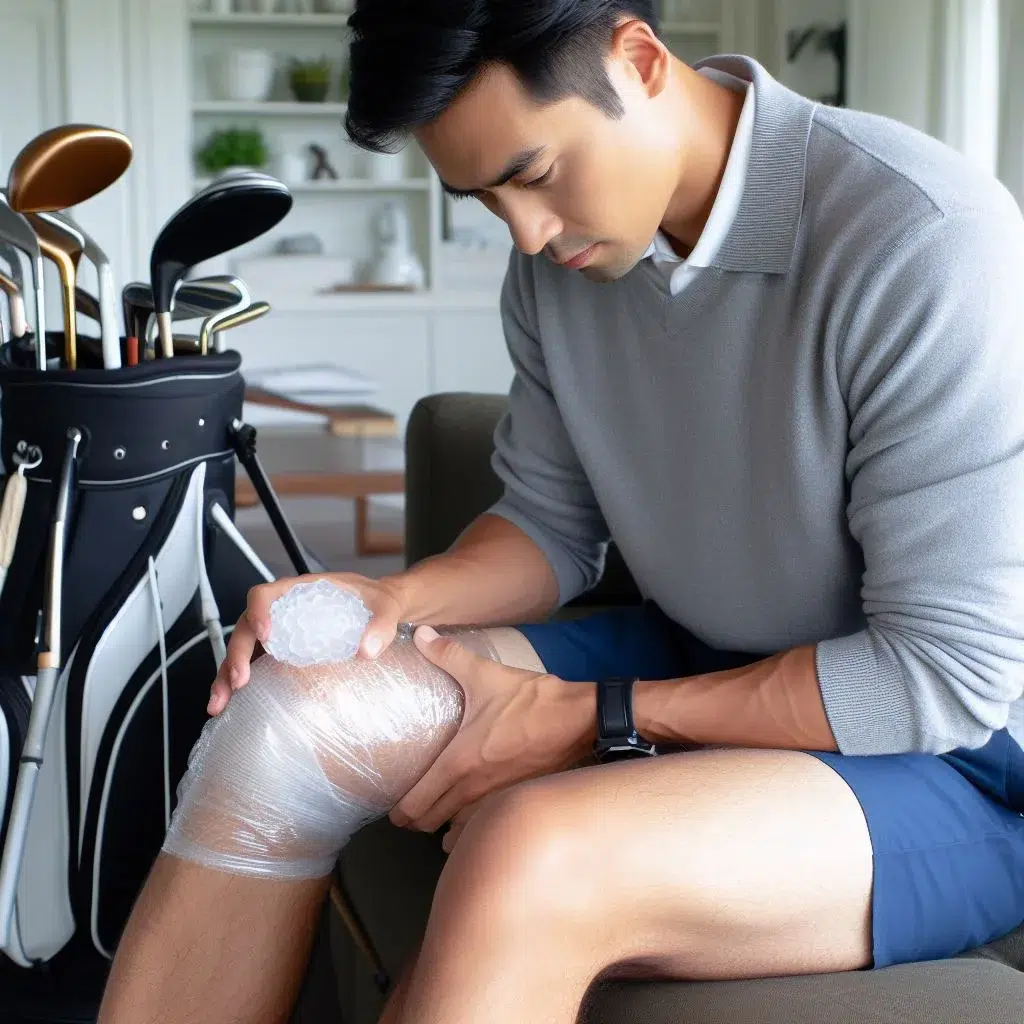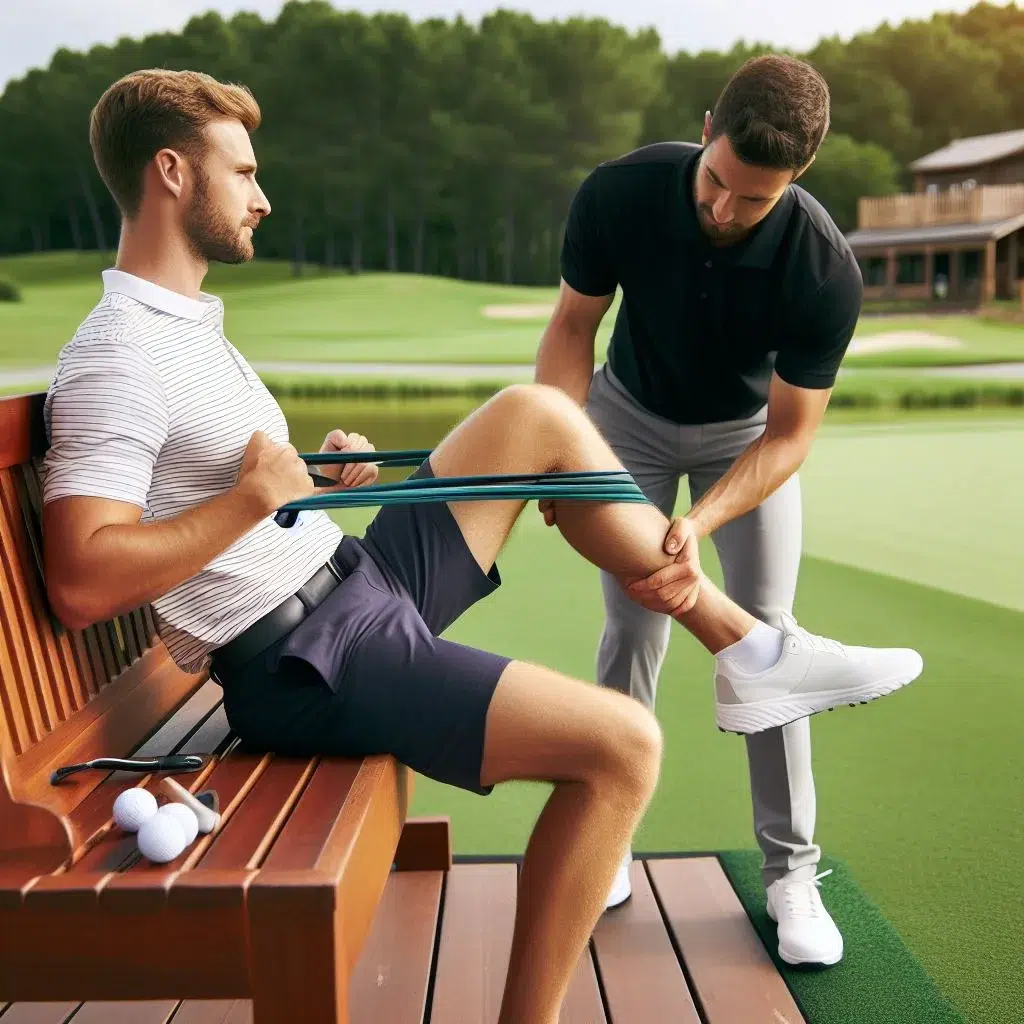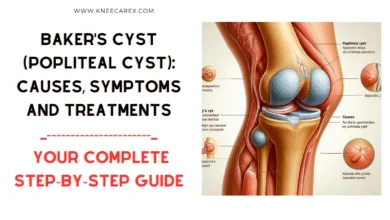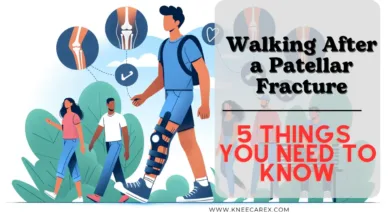Navigating Golf Knee Injuries: Prevention, Symptoms, and Recovery

Many people enjoy playing golf because of its accuracy, serenity, and the beautiful green courses it comes with. But like every sport, it has its share of ailments, with the knee being a frequent casualty. We go into great detail on golf knee injuries in this blog post, explaining their causes, symptoms, and—most importantly—how to avoid and treat them. This handbook is your best friend when it comes to maintaining the health of your knees and perfecting your swing, regardless of your level of experience.
Contents
Understanding Golf Knee Injuries:
Golfers can suffer injuries from their repetitive twisting and pivoting motions when swinging a club, especially to the knees. Typical ailments include meniscus tears, which can lead to instability and poor shock absorption, and patellar tendinitis, sometimes known as jumper’s knee. It is essential to comprehend these injuries in order to avoid, diagnose, and treat them effectively. An adequate warm-up, focused strength training, and proper swing mechanics can all help lower the risk of knee injury on the golf course.
Preventing Golf Knee Injuries:
Warm-Up Properly:

Strengthen Your Leg Muscles:
Golfers must warm up properly before a game in order to activate their joints and muscles and achieve a successful swing. While dynamic stretches like arm circles and torso twists can improve range of motion and lower the chance of injury, light activities like walking or jogging can help release muscles and develop flexibility. Mental exercises like meditation can help with focus and performance. Light exercises that focus on particular muscle groups may be helpful for golf knee issues. Effective healing requires paying attention to your body’s cues and staying away from strenuous activities.
Work on Your Swing Technique:
For both lowering knee problems and increasing golf performance, a good swing technique is essential. It guarantees that pressure is applied to the knees uniformly, avoiding undue strain on any joint. It can also be helpful to concentrate on body alignment, maintain balance and stability, and use the right amount of force without going overboard. By generating power efficiently, proper body mechanics can lessen the needless strain on the knees. Golfers may enjoy the game without running the danger of knee injuries by working on their swing technique.
Wear the Right Shoes:
Wearing the right golf shoes is crucial for preventing knee injuries during golf swings. The repetitive movements can put pressure on the knees, leading to chronic pain and severe injuries. For golfers who have high arches or flat feet, arch support is crucial because incorrect weight distribution can result in knee strain. Proper grip and traction are essential for maintaining balance and reducing strain on the knees. Investing in comfort, finding the right fit for your feet type, and prioritizing stability and traction are essential for a comfortable golf experience.
Identifying the Symptoms:
Sharp pain in the knee when straightening the leg is a red flag. Other symptoms include:
- Swelling and stiffness
- A popping or clicking sound
- Difficulty in bearing weight on the affected leg
- Limited range of motion
Recovering from Golf Knee Injuries:
Rest:
A vacation from physically demanding hobbies, like golf, is essential for knee injuries to heal properly. With rest, the knee can heal without getting worse by boosting blood flow and lowering inflammation. Rather than being completely inactive, change your schedule to minimize needless stress by doing low-impact workouts as well as moderate stretching and strengthening activities. This preserves your general level of fitness while enabling your body to heal. Taking a vacation from golf can also offer chances for personal development, like discovering new interests or book genres.
Ice and Compression:

Elevate:
For the treatment of knee injuries, particularly in golf, elevating the injured leg is essential. It prevents fluid build up, encourages healthy blood circulation, and decreases swelling to facilitate a quicker recovery. Because it creates opportunities for self-care and awareness, elevating the leg also has a favorable effect on mental health during the healing process. It’s crucial to include elevation in everyday activities by utilizing cushions or other items made for higher comfort. By keeping the leg raised all day, you can promote healing conditions in the knee joint and reduce needless strain.
Physical Therapy:
In order to heal from a golf knee injury, physical treatment is crucial, with an emphasis on regaining flexibility and strength. A therapist develops a customized treatment plan to address particular weak points and regain stability and mobility. It improves body awareness, balance, and coordination, which improves golf performance. Strength is developed in essential muscles by progressively increasing intensity, which ensures stability during swings. Since the body takes some time to adjust to new movements, consistency is essential.
When to See a Doctor:
Seeking medical attention is essential if the discomfort continues or gets worse. They are able to offer a precise diagnosis and suggest the most appropriate line of action.
FAQ’s
How do you treat a golfer’s knee?
Golfers must take precautions to avoid injury because the game, which involves repetitive actions, can strain the knees. Physical therapy can assist in reducing strain, strengthening the knee muscles, and enhancing posture. Surgery might be required in extreme situations, and arthroscopic surgery relieves pain. Rest is crucial for reducing inflammation and swelling, and rehabilitation is necessary for healing. Exercises with little impact, like cycling or swimming, can help you stay active without aggravating your pain.
Can you hurt your knee from golf?
Golf is a low-impact sport, but the repeated twisting and pivoting actions can lead to knee issues. Patellofemoral pain syndrome, sometimes known as golfer’s knee, is a frequent condition brought on by inflamed cartilage beneath the kneecap. Knee discomfort can also result from the degenerative joint disease osteoarthritis. Golfers should do strength training on a regular basis and warm-up activities to reduce their risk of osteoarthritis. Golf is a low-impact sport, but injuries can still happen, particularly to the knees.
How do you rehab your knees for golf?

What is the inside knee injury from golf?
A typical golf ailment that results from placing too much strain on the knee joint during the swing is an inside knee injury. The medial collateral ligament may be severely torn or ruptured in addition to minor sprains. Golfers should keep an eye out for pain and instability so they can get help when needed. The risk of this injury can be decreased by practicing perfect form and improving biomechanics during swings.
Conclusion: Golf Knee Injuries
Golf knee injuries can be devastating, but you can avoid them and make sure you heal quickly if they do happen by taking the appropriate information and safety measures. Always pay attention to your body, use the right methods, and never ignore suffering. Cheers to stronger knees and improved golf!
Also read: Soreness After Golf: 5 Tips to Prevent Soreness and Knee Pain




